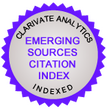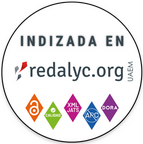BUSINESS ADMINISTRATION RESEARCH FORMATIVE INDICATOR MEASUREMENT: HOW TO DEAL WITH THEIR MULTICOLLINEARITY
DOI:
https://doi.org/10.13058/raep.2010.v11n2.145Keywords:
structural equation modeling, SEM, LISREL, PLS-PM, formative indicators.Abstract
The use of formative indicators in structural equation models is one of the reasons for using the Partial Least Squares Path Modeling (PLS-PM) instead of LISREL. Furthermore, the use of PLS-PM in Business Administration researches has increased. The objective of this study is to
evaluate the effects of the formative indicators' multicollinearity on the estimated values for the factor weights and the structural coefficient. To simulate different levels of multicollinearity, the number of indicators per latent variable and the correlation between them are varied, so
generating 540 models with different values for the structural coefficients. As conclusion, it is found that the growth of factor weight variability is increased for lower values of structural coefficient. Despite the impossibility of evaluating the relative importance of each indicator to
measure the construct under the influence of multicollinearity, it is observed that the structural coefficients are not altered. There is also observed inconsistency of PLS-PM when using less than five indicators per latent variable (consistency at large) and when the reliability is less than 0.9. In the end, some recommendations are made so as to minimize the effects of multicollinearity and some directions are given towards further researches.
Downloads
Downloads
Published
How to Cite
Issue
Section
License
By publishing a manuscript in the journal Administração: Ensino e Pesquisa (RAEP), the authors declare that the work is of their exclusive authorship and therefore assume full responsibility for its content. The authors grant RAEP a non-exclusive rights license to use the work in the following ways:
(1) Sell and / or distribute the work in hard copies or electronic format.
(2) Distribute parts of the work as a whole to promote the journal through the internet and other digital and printed media.
(3) Record and reproduce the work in any format, including digital media.
Authors and readers are permitted to share the material, use it in classes, for presentations and also for other purposes, and to create new knowledge based on any RAEP publication, as long as the due credit is attributed to the original work and the respective author(s), through citations, references, and other means.
The journal adopts preventive measures to identify plagiarism using software designed for this purpose.
RAEP does not charge authors for the article submission nor for the publishing of approved articles.
In line with the journal's policies, each published article will be given a Creative Commons CC-BY 4.0 license.










